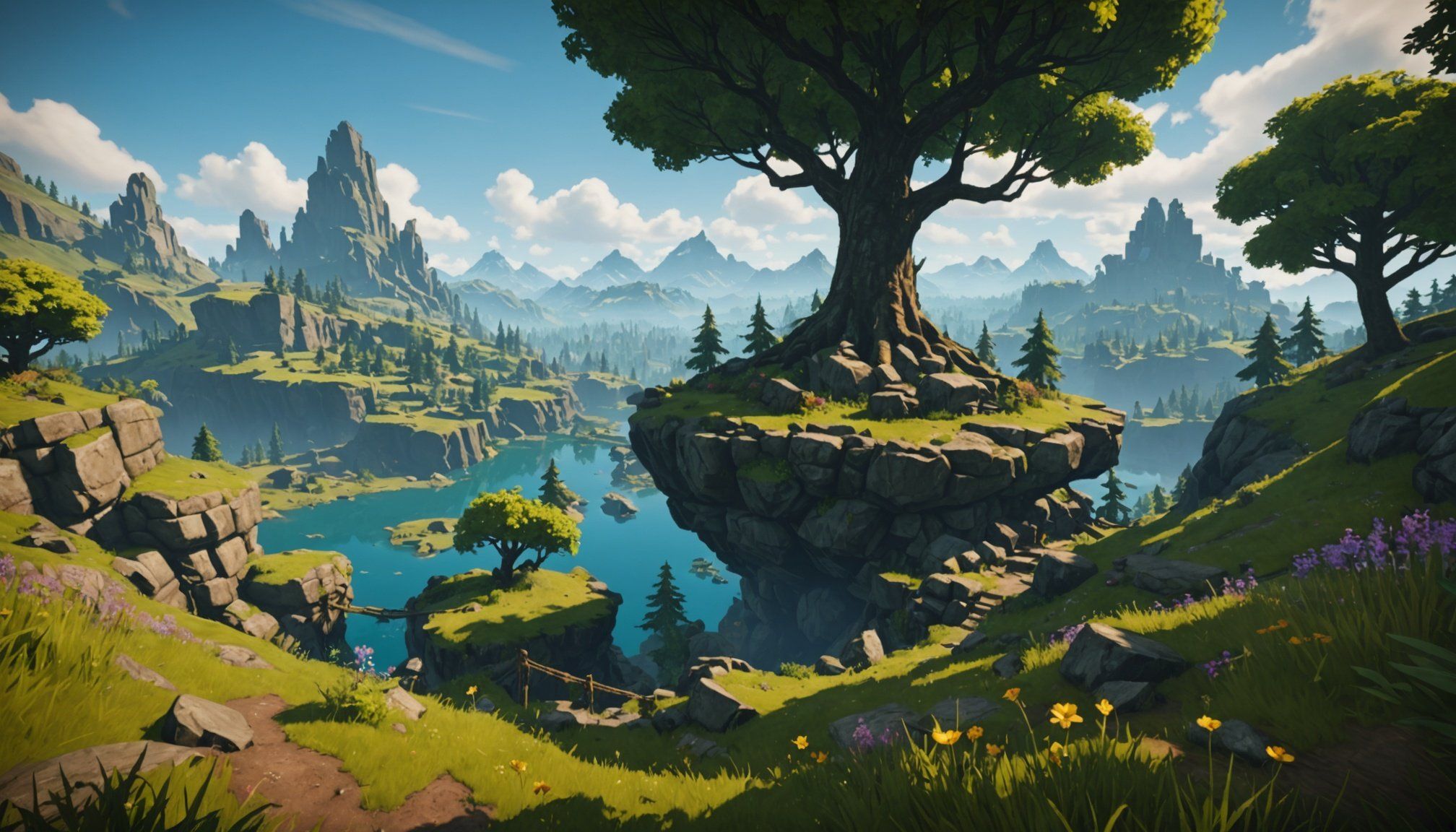Understanding Procedural Generation
Procedural generation is a fascinating aspect of game design that uses algorithms to create expansive and unique game environments. Unlike traditional methods where every element is manually crafted, procedural generation relies on defining rules and parameters within an algorithm to automatically generate game content. This technique allows for the creation of diverse and endless game worlds, offering players unique experiences each time they play.
Historically, procedural generation has evolved significantly since its initial use in the 1980s. Early examples include using simple algorithms to generate randomized dungeon levels. Over time, as computing power increased, the complexity and quality of procedurally generated landscapes also improved. Modern games like “No Man’s Sky” leverage procedural generation to create vast, explorable universes with billions of unique planets, showcasing the impressive potential of algorithmic landscapes.
Also to see : Key elements for developing genuine npc interactions in sandbox gaming environments
The importance of algorithms cannot be overstated in this context. They are the backbone of procedural generation, enabling the creation of intricate details with random elements that appear naturally placed. This method not only increases efficiency in game design but also enhances replayability by providing new challenges and adventures. By continuously refining these algorithms, developers push the boundaries of what can be achieved through procedural generation in gaming.
Impact of Procedural Generation on Survival Games
Procedural generation in survival games offers a dynamic canvas that greatly enhances player immersion and engagement. By introducing a degree of randomness and unpredictability, these games maintain freshness and replayability, essential qualities for captivating gameplay.
In the same genre : Ultimate strategies to minimize input lag for peak performance in competitive console gaming
One key element procedural generation brings is limitless landscapes. Players embark on vast explorations where each new game session feels like uncharted territory. This exploration attracts curiosity and encourages players to discover the world, creating deeply immersive experiences.
Survival games like “Minecraft” and “Don’t Starve” exemplify the success of integrating procedural generation. In “Minecraft,” each new world brings a unique environment, complete with varied biomes and hidden treasures, boosting the player’s sense of adventure. “Don’t Starve” presents players with ever-changing terrains that challenge them to adapt their strategies, adding a layer of unpredictability and further enhancing engagement.
Gameplay enhancement through procedural techniques ensures that discoveries feel organic and personal. Limitless landscapes mean players are not just interacting with a set environment, but engaging with a living, breathing world that evolves with their actions. This approach fundamentally alters how players experience survival games, offering endless possibilities for exploration and enjoyment.
Benefits of Limitless Landscapes in Gameplay
Limitless landscapes in games present players with vast opportunities for creativity and freedom. These infinite environments allow gamers to explore uncharted territories, uncover hidden secrets, and engage in activities that might not be possible within confined spaces. Lush forests, expansive deserts, and mysterious underwater realms offer unique settings that encourage spontaneous exploration and discovery.
One of the notable advantages of limitless landscapes is the enhancement of game replayability. With dynamic and unpredictable terrains, each playthrough can offer a new experience. Players are stimulated to embark on different journeys, tackle challenges differently, and uncover diverse outcomes. This variability not only extends the game’s lifespan but also fuels the players’ curiosity and motivation to explore extensively.
Interacting with these vast game worlds yields mental and emotional benefits. The freedom to wander and explore can evoke feelings of relaxation and wonder, providing an escape from the pressures of real life. Immersive landscapes invite players to lose themselves in their beauty, aiding in mental well-being as they meander through diverse environments.
In essence, games with boundless environments cater to both the exploratory instincts and the desire for continuous novelty, creating a rich and fulfilling gaming experience.
Challenges of Using Procedural Generation in Survival Games
Procedural generation introduces a series of design challenges in survival games, which can impact the overall player experience. One significant issue is maintaining quality control over the generated content. As the game worlds are created algorithmically, there’s a risk that the environments may lack cohesion or contain repetitive elements, diminishing player engagement.
Balancing randomness with an appealing and coherent design is also a complex task. While procedural generation aims to provide unique scenarios, excessive randomness can result in disjointed landscapes or gameplay inconsistencies. Developers must fine-tune algorithms to create worlds that feel both natural and navigable, ensuring players remain immersed without becoming disoriented or frustrated.
Another critical aspect involves managing player perceptions and expectations of procedural landscapes. Players often anticipate a degree of novelty and exploration but may grow disillusioned if the environments fall short. Expectations vary, but the goal is to deliver a rich and satisfying adventure that retains the excitement of exploration.
It’s essential to address these procedural challenges to maintain the delicate balance between novelty and cohesion, ultimately enhancing the overall player experience in survival games. By doing so, developers can foster a more engaging and enjoyable encounter with procedurally generated worlds.
Future of Procedural Generation in Game Development
As the gaming industry evolves, the role of procedural generation continues to expand, driven by future trends and innovations. Emerging techniques are pushing boundaries, allowing for more dynamic and immersive environments within games. One notable trend is the use of procedural generation in crafting expansive, open-world settings. This innovation enables developers to create vast landscapes filled with diverse ecosystems and complex terrains, offering unique experiences with each gameplay session.
In addition to enhancing environments, procedural generation is showing promise in character and plot development. By integrating player choices and actions, future games can adapt storylines, ensuring personalized narratives and interactive storytelling. Such advancements are paving the way for deeper engagement and replayability, crucial elements in survival games where player immersion is essential.
Technological advancements in artificial intelligence and machine learning also contribute to the evolution of procedural techniques. AI-driven algorithms can optimize content generation, ensuring that game worlds remain consistent and meaningful while reducing the manual workload on developers. As these innovations progress, the potential for procedural generation to create unprecedented gaming experiences grows, signalling an exciting future for both creators and players alike.











